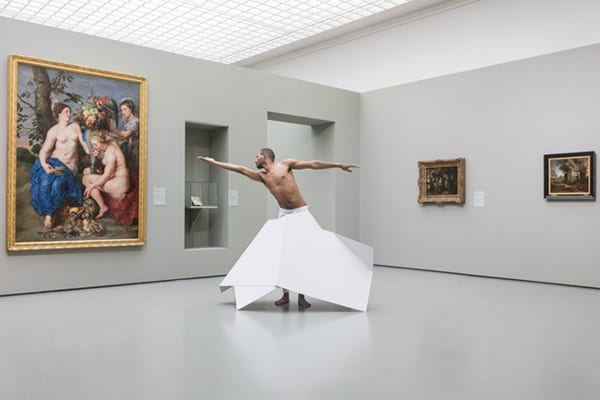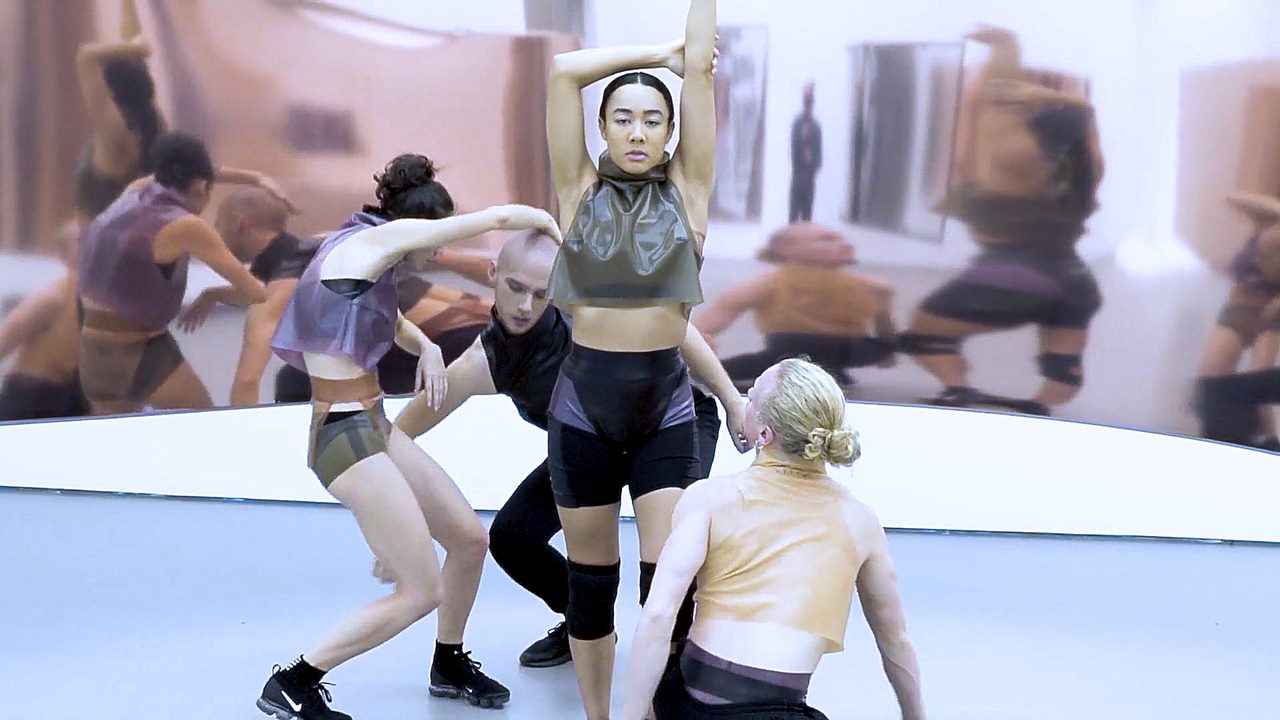
Earlier this month, a converted art deco department store in Brussels opened its doors to the same cohort of well-heeled collectors and eagle-eyed curators found prowling the booths at Art Basel and Frieze. While a man in the window blew up an aluminium balloon and two women in white jumpsuits enacted a cultish mirrored dance, an airport departure board in the lobby informed visitors which performances were happening where throughout the two-storey building. Easily mistaken for an art world parody, A Performance Affair is the worlds first fair dedicated exclusively to performance—and it signposts a growing demand to put contemporary art’s most elusive medium to the market.
But the road to a sustainable market model is peppered with tricky technical questions and potential lawsuits. How do you value a performance-based work? What, exactly, are collectors buying? Must a work come with props, documentation or (in the Tino Seghal method) as a set of instructions, bought and sold as a concept alone? How many times can it be performed upon acquisition, and in what context? What happens when the collector or artist dies? Is re-selling allowed?

It’s something of a paradox for the art world’s hottest medium. Even as performance becomes an increasingly popular feature in institutional exhibitions and fairs—the Venice Biennale debuted a dedicated programme this year—the fine print of its sale, and its place in such a ruthlessly commercial ecosystem as the art fair, remains uncertain.
“To programme performance for an art fair is to navigate the event economy,” says Louise O’Kelly, founder of the London-based annual performance art festival Block Universe, and guest curator for this year’s DRAF Evening of Performances. “It’s a great way to gather people, to create excitement and hype. But for collectors at a fair like Frieze, these disruptive performances are an inconsequential annoyance—a distraction—which provokes the interesting question, for whom it’s intended.”
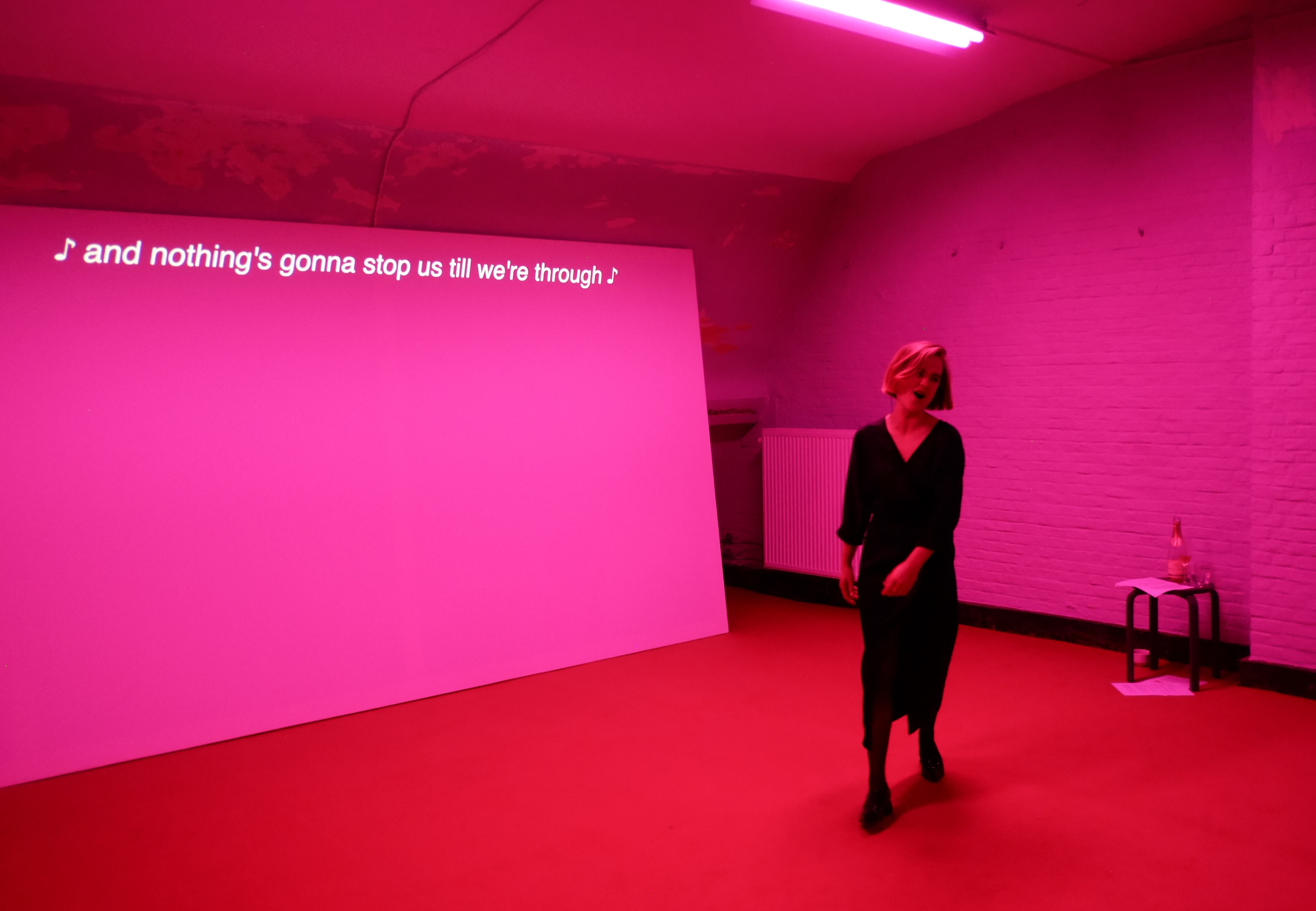
Over the past four iterations of Block Universe, O’Kelly has done much to raise the profile of emerging performance artists without entering into the restrictive profit-driven format of commercial art fairs. As the inaugural guest curator of DRAF’s eleventh annual one-night-only performance event, which coincides with Frieze week, she’s selected a diverse cohort of six artists and collectives born from the seventies to the mid-nineties. The connecting thread amongst the work on show is a shared interest in the transgressive history of this year’s venue, Ministry of Sound—a nightclub that has stringently fought off the redevelopment epidemic tearing down much of the built history of Elephant & Castle.
“O’Kelly welcomes in the new performance vanguard with new commissions by artists whose work largely explores identity politics and issues of race, gender and sexuality”
“One cannot talk about performance art without discussing its spatial context,” explains O’Kelly. Citing the subversive history of the music venue in nineties England, she notes club culture’s enduring legacy and social significance in a city as expensive and crowded as London—not least with the Brexit date looming on the horizon. “Within the current political context in the UK it seemed fitting to pay tribute to this venue and all it has done to serve as a safe space for marginalized voices.”
Tracing back the interconnection of subversive politics and party culture to late seventies and eighties music movements including punk and the new romantics, O’Kelly’s curation of this year’s Evening of Performances reveals a deep understanding of the link between then and now—and what has changed. Harnessing the historical role of the nightclub as a transgressive space offering both freedom of expression and collective experience, O’Kelly welcomes in the new performance vanguard with new commissions by artists whose work largely explores identity politics and issues of race, gende and sexuality.
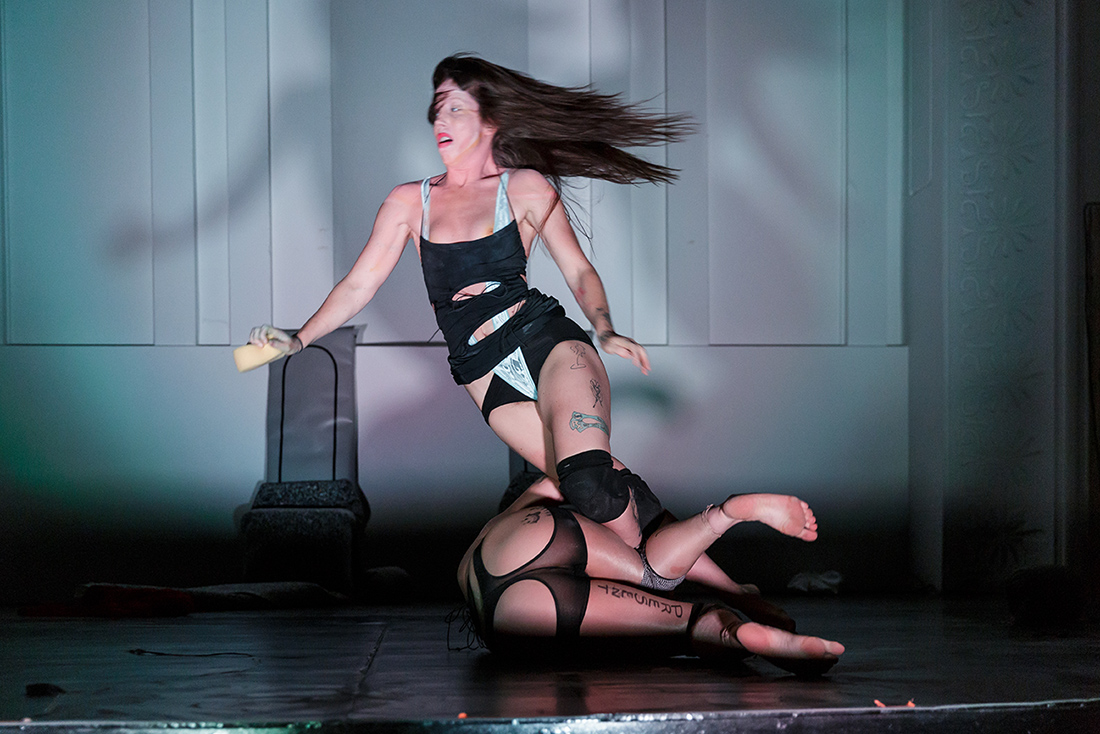
From the spoken word poetry of artist and activist Kai-Isaiah Jamal, which intimately navigates the precarity of the trans black experience, to the gripping performances of US-based FlucT duo, which viscerally examine power relationships played out through the body, the cohort lining up DRAF’s eleventh edition are emblematic of a new era of performance art wherein queering experience and self-reflexivity conjure powerful shared experience.
O’Kelly has anchored the event with a few artists who “have a proven track record”—including Haroon Mirza, the British sound and light artist who will also be playing Elephant’s ten-year anniversary party this week; Hannah Perry, who previously DJed sets at Block Universe; and Jimmy Robert, a Guadeloupean artist whose sociopolitical work has not yet seen much attention in the UK. “For the younger voices, being represented at an event like this makes a huge difference in their career,” explains O’Kelly.
“Many galleries continue to shy away from bringing performance to the booth”
Unbound by cumbersome installations or static materiality inherent to traditional media, performance is a sticky shapeshifter. It readily adapts to and moulds itself around the present; it is responsive and also generative. But in holding a mirror up to today, contemporary performance pushes past the critical issues it raises to create an alternative future for the present.
- Jimmy Robert, Metallica, 2018. Garage Rotterdam, “Brandstof on location” performance, Museum Boijmans Van Beuningen. Photo: Florian Braakman. Courtesy of the artist, Tanya Leighton, Berlin and Stigter van Doesburg, Amsterdam.
“The new face of performance can be tracked to a few things,” argues O’Kelly. “Artists are increasingly working across mediums in a less closed off way; moreover, the emergent generation of performance artists are representative of a broader social scale, whose work is concerned with gender fluidity and self-representation—the question of how you present yourself to the world.”
The teleportational and self-reflective capacities of contemporary performance make it seem like a well poised saviour from the capitalist feeding frenzy of the art fair. Surely a feather-ruffling “art experience” that spooks heavy-pocketed collectors out of their Balenciaga suits would sit well in the era of the museum that’s desperate to appear woke, and appease an art fair keen on its geotags. And the cash cow of the art fair does seem, however sluggishly, to be making space for such interventions.
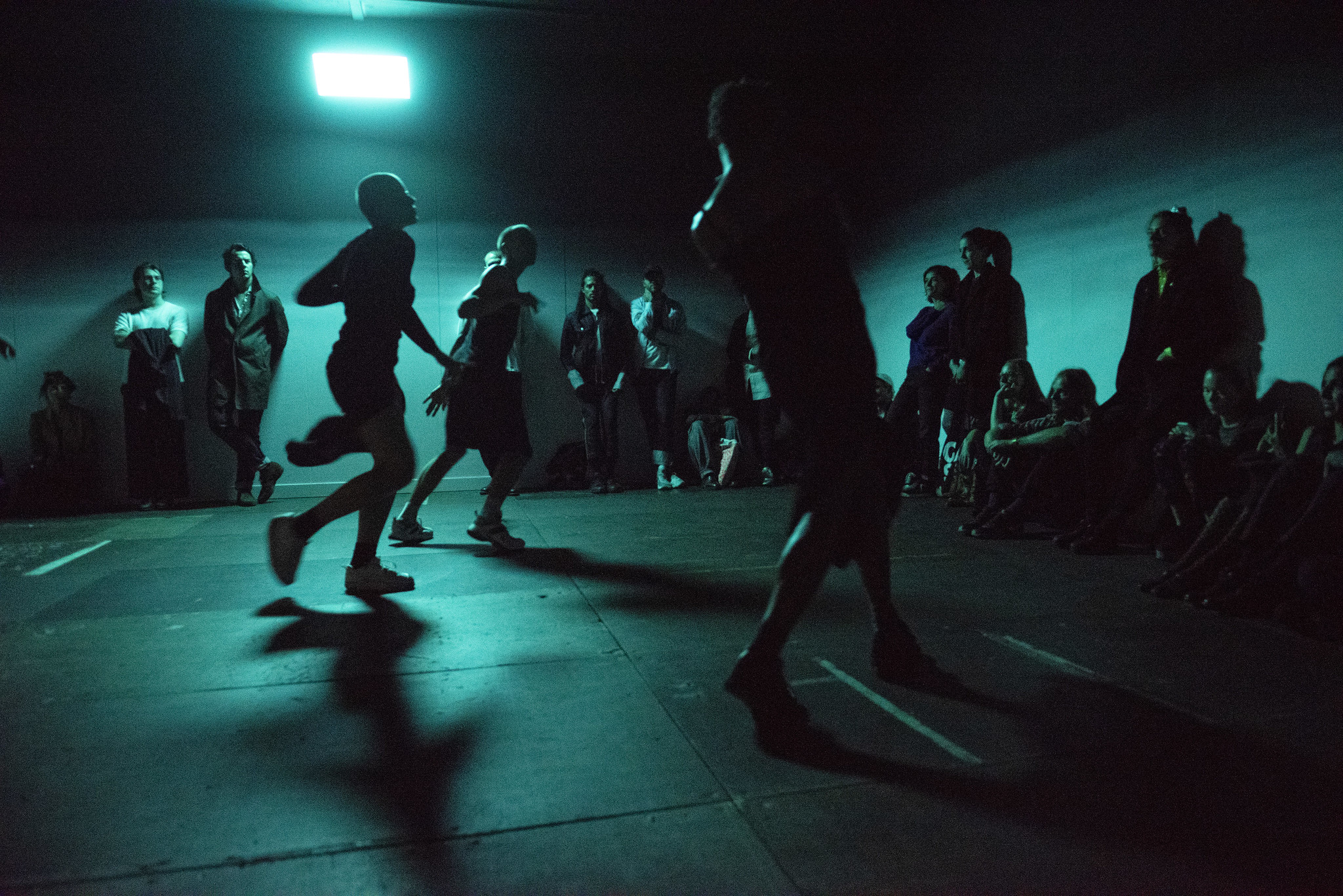
Last year, in addition to awarding the Frieze Artist Award to a performance work for the first time, the fair also hosted a provocative piece by Liz Glinn that attempted to track the live-time pace of sales at the fair via dancers’ choreography. But a trojan horse-like critique of the art world can only go so far—often, it is the fair or institution that benefits from the atmospheric excitement and rakes in points for the work on show. Other times, poor sound checks and bad scheduling all too brutally reveal the fair’s organizers couldn’t give a shit. In 2017, Frieze’s Projects section gave the floor to SPIT!—a radical queer art collective working in spoken word—to debut five new manifestos.
But concerns over disrupting the ambience of the fair meant the performers weren’t given microphones; the cries for social revolution dispersed amid the clatter of stilettos and sale-happy pops of champagne. “There’s something incredibly ironic about giving a platform to these groups at the fair, but literally preventing them from actually being heard,” reflects O’Kelly.
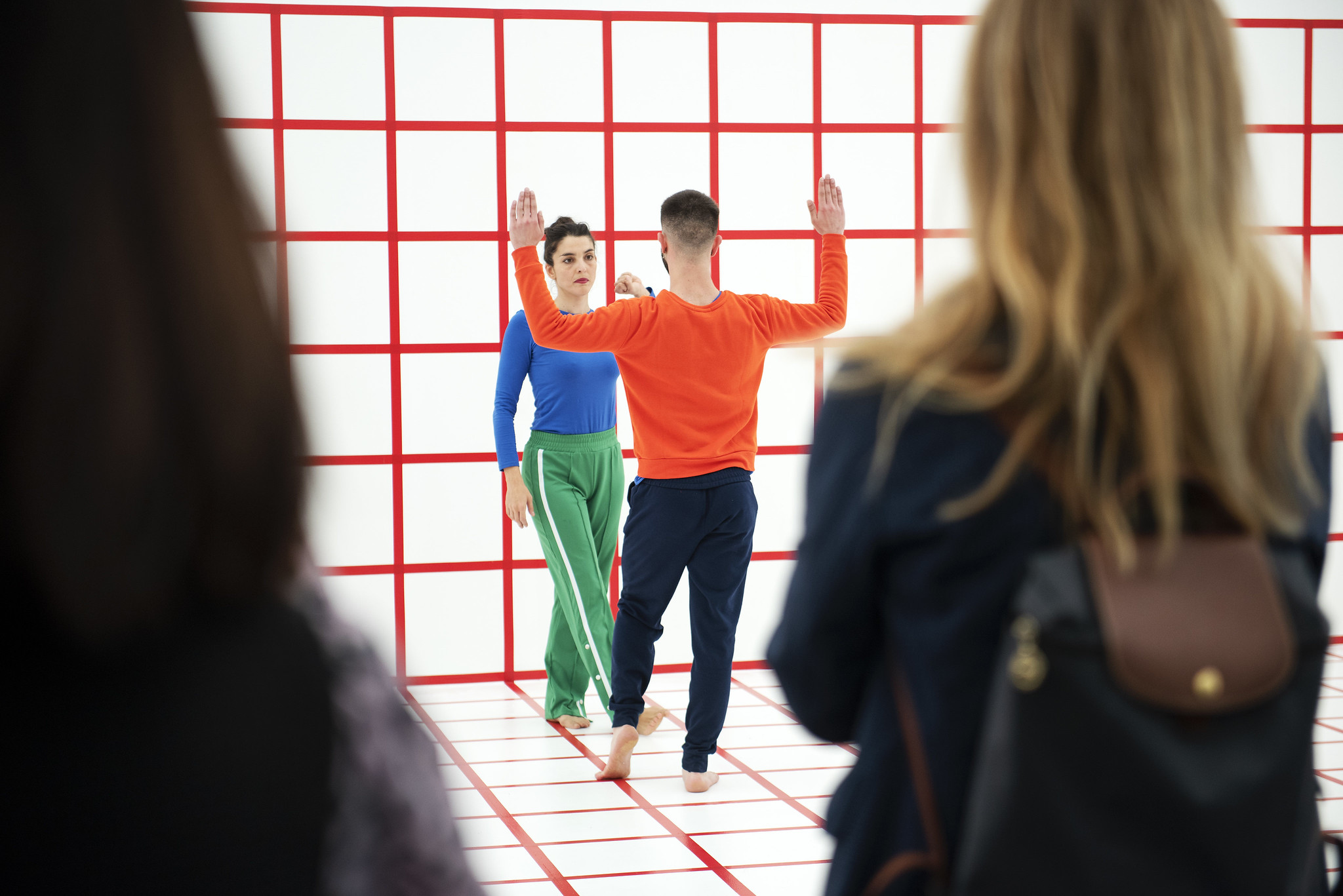
Unsure how to market a performance-based work and doubtful on its return value amid riotously expensive fair fees, many galleries continue to shy away from bringing performance to the booth. Others cite the conceptual density inherent to much performance work as a hard sell—it’s missing the (not so) cheap thrill of a satisfyingly splodgy maximalist painting. As a hard-hitting spoken word poem doesn’t (yet) trigger the same share counts as the shouty joy of pseudo-poetic neon text art—at least among the current clientele—it’s enough to think that a satellite performance festival in a different venue is a mutually beneficial separation.
Performance-exclusive art fairs like A Performance Affair demonstrate a keen interest in reconfiguring the ways in which the form is exhibited to collectors, which comes at the weighty risk of standardizing its affect and bleeding it dry of the raw impact that makes performance so priceless. It’s also up to us to lane check our expectations for fairs, as commercial spectacles that will ultimately always follow the money over punchy new work, and to support the alternative events that are representing this new wave of performance well. “Showcasing performance at fairs is a great way to raise the artists’ profile, or for some galleries to show love to a performance artist they represent,” says O’Kelly, “But at the end of the day, everyone’s there to turn a profit.”

